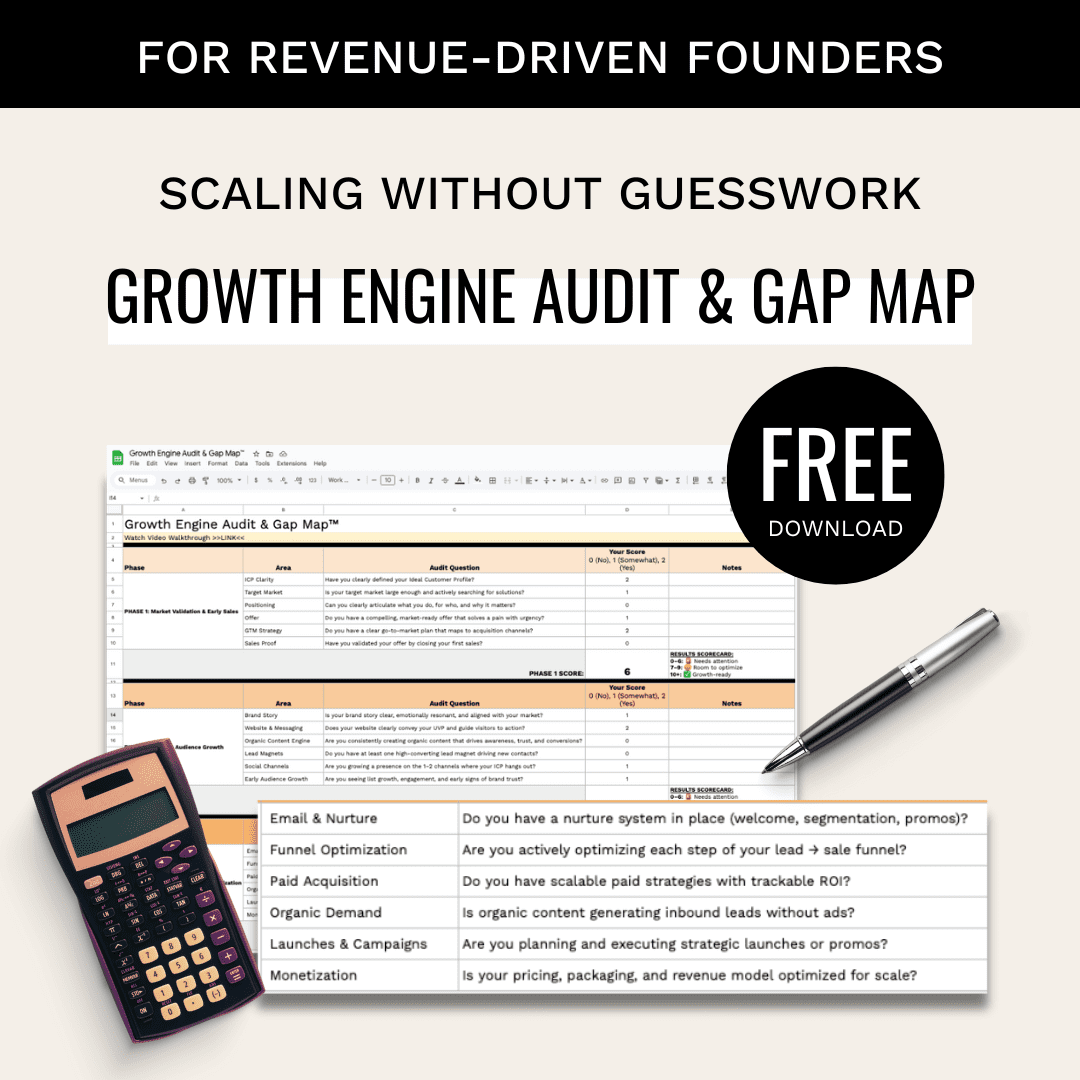Want to make your product the driver of growth for your business? Product-Led Growth (PLG) is the key. This model focuses on using your product to acquire, convert, and retain customers, but it only works when teams are aligned. Here’s what you’ll learn in this guide:
- What is PLG? A strategy where the product itself drives growth through self-service, value-first experiences, and data-driven decisions.
- Why team alignment matters: Misaligned metrics, communication gaps, and competing priorities can derail PLG efforts.
- Key team roles: Product, marketing, sales, customer success, and engineering must collaborate seamlessly.
- How to align teams: Use shared goals, customer journey mapping, and small cross-functional groups to stay on track.
- Tools for success: Leverage communication tools, centralized data systems, and progress dashboards to boost collaboration and track results.
This guide also includes actionable tips to measure and improve team performance, ensuring your PLG strategy delivers results. Ready to align your teams and grow through your product? Let’s dive in.
How to Align Your Team Around The Metrics That Matter Most for Product-Led Growth
Team Roles in PLG Success
Every team plays a vital role in Product-Led Growth (PLG) by owning specific responsibilities while working together seamlessly.
Product Team Functions
The product team lays the groundwork for PLG by creating features that encourage organic adoption. Their main tasks include:
- Designing user-friendly onboarding experiences
- Building self-service tools
- Setting up product analytics
- Creating viral loops and network effects
- Shaping the product roadmap based on real usage data
They focus on delivering quick wins while also planning for long-term improvements, working closely with engineering. This solid base allows marketing, sales, and support teams to amplify the product’s reach and impact.
Marketing and Sales Activities
In a PLG model, marketing and sales teams shift their focus to strategies centered around the product itself.
Marketing Areas of Focus:
- Crafting content that directly showcases the product’s value
- Creating self-service tools and resources
- Running campaigns that highlight specific features
- Engaging with communities and leveraging user-generated content
- Using product data to spot growth opportunities
Sales Responsibilities:
- Assisting users who need extra support
- Focusing on high-value, engaged accounts
- Using product usage data to identify expansion opportunities
- Sharing user insights with the product team
- Helping enterprises adopt key product features
Customer Success and Engineering Work
Customer success and engineering teams play a crucial role in ensuring the product runs smoothly and delivers a great user experience.
Customer Success Tasks:
- Tracking user health metrics
- Developing scalable support systems
- Addressing common user challenges
- Creating automated help workflows
- Gathering and organizing user feedback
Engineering Priorities:
- Keeping the platform stable and reliable
- Monitoring usage effectively
- Enabling fast feature rollouts
- Building integration capabilities
- Ensuring security and compliance standards are met
Regular cross-team meetings help maintain alignment and keep everyone focused on shared PLG goals. Together, these roles create a data-driven, well-aligned path from user engagement to growth.
Methods to Align Teams for PLG
Getting different teams on the same page requires a structured approach. Here’s how to bring everyone together around shared goals.
Common Goals and Metrics
Every team needs clear, measurable targets that tie directly to Product-Led Growth (PLG) success. Focus on metrics that resonate across departments, such as:
- User activation rate: Tracks the percentage of new users who complete key actions during their first session.
- Time-to-value: Measures how quickly users achieve their first meaningful result.
- Net revenue retention: Looks at revenue growth from existing customers, including upsells and renewals.
- Product-qualified leads (PQLs): Identifies users with high engagement levels who are ready for further action.
Use dashboards to make these metrics visible across teams. This clarity helps everyone understand their role in achieving PLG objectives and highlights areas for collaboration along the customer journey.
Customer Journey Planning
Once metrics are in place, map out the customer journey to find key collaboration points. Start by identifying:
- Important user touchpoints across departments.
- Friction that slows down user adoption.
- Tasks that could benefit from automation.
- Critical moments where personal support makes the biggest difference.
Hold regular workshops with team members from different departments to refine these journey maps and address pain points. Update the maps every quarter as new insights about user behavior emerge.
Small Mixed-Team Groups
Create small, focused groups (or pods) made up of members from various departments to work on specific PLG projects. Each pod should:
- Include representatives from product, marketing, sales, and customer success, all focused on a single goal.
- Meet weekly to share updates, address challenges, and keep momentum going.
- Have the authority to make quick decisions without waiting for higher-level approvals.
These groups should focus on delivering results. Assign them clear targets that align with overall PLG goals and give them the freedom to figure out how to achieve those outcomes.
sbb-itb-e8c8399
PLG Team Coordination Tools
When teams are aligned with shared goals and a clear customer journey, the right tools can make all the difference in keeping everyone on the same page.
The following tools are essential for boosting collaboration and keeping a strong focus on product-led growth (PLG).
Team Communication Tools
Tools like Slack are great for real-time updates, sharing user feedback, and improving team coordination. To complement communication, many organizations use project management platforms to track tasks, plan campaigns, and maintain shared documents. These tools ensure everyone stays aligned and organized.
User Data Systems
Centralized user data is a must for PLG success. Analytics platforms help collect and analyze data automatically, offering insights into metrics like time to first value, feature adoption, user engagement, and conversion rates. This data empowers teams to make informed decisions and identify opportunities for growth.
PLG Progress Tracking
Custom dashboards are a powerful way to track key performance indicators (KPIs) such as daily active users, feature adoption, customer health, and revenue. By integrating these dashboards into daily workflows and regular check-ins, teams can quickly spot issues and fine-tune their strategies.
Using these tools not only improves daily decision-making but also helps teams stay flexible and responsive in their PLG efforts.
Track and Improve Team Results
Keeping tabs on team performance and finding ways to improve it is crucial for driving growth in a product-led growth (PLG) strategy. To do this effectively, you need to focus on how well your team works together internally and how those efforts impact your business externally. Building on strong cross-functional alignment, this dual focus helps deliver measurable results.
Key Metrics to Watch
Set clear KPIs in these three areas:
- Collaboration Efficiency: Track things like how quickly issues are resolved, how fast sprints are completed, and how productive meetings are.
- Customer Impact: Monitor metrics such as time-to-value, feature adoption rates, and customer satisfaction scores.
- Business Outcomes: Keep an eye on user activation, revenue contributions, and the cost of acquiring new customers.
Reviewing Progress Regularly
Keep the team on track by scheduling regular check-ins:
- Daily stand-ups: Short sessions to tackle roadblocks and identify immediate opportunities.
- KPI reviews: Periodic meetings to evaluate performance metrics and make adjustments.
- Long-term alignment meetings: Broader discussions to reassess goals and team dynamics over time.
Highlighting Achievements
Celebrating wins isn’t just about feeling good – it motivates the team and encourages continued progress. Use dashboards to showcase quick wins or share case studies of successful initiatives. Making these successes visible helps reinforce collaboration and inspires ongoing learning.
Conclusion
To wrap up, let’s focus on the tools and leadership steps that solidify cross-functional alignment for product-led growth (PLG).
Tools and Methods Review
Achieving alignment across teams in a PLG framework requires the right tools and a well-defined approach. Some key tools include communication platforms, integrated data systems, and cross-functional dashboards. These tools help ensure transparency and collaboration. Additionally, customer journey mapping tools are crucial for helping every department understand their role in creating value for the customer.
Leadership Requirements
Leaders play a critical role in ensuring cross-functional alignment. Here’s how they can make it happen:
- Set Clear Objectives: Define measurable goals that align product, marketing, sales, and customer success teams.
- Enable Data Access: Provide shared access to customer insights and analytics to break down information barriers.
- Remove Silos: Encourage regular collaboration between teams through structured meetings or shared projects.
- Empower Decision-Making: Allow teams to make decisions independently while staying aligned with the overall PLG strategy.
These leadership actions form the backbone of a successful PLG strategy and help create a collaborative environment.
Data-Mania: Fractional CMO Services for PLG

For technology companies needing expert PLG guidance, Data-Mania offers Fractional CMO services tailored to cross-functional alignment. Led by Lillian Pierson, a seasoned marketing leader in data and AI, Data-Mania specializes in creating unified go-to-market strategies that align teams around PLG goals. Their services include strategic marketing consulting, leadership development, and crafting KPI frameworks – key components for effective PLG execution.
With experience across SaaS, data platforms, and AI industries, Data-Mania is equipped to help organizations navigate PLG transformation. Their advisory services focus on building the foundational elements needed for collaboration while keeping the spotlight on measurable results.
Related Blog Posts
- Product-Led Growth vs Sales-Led Growth: Which Fits Your SaaS?
- Customer Feedback Loops for PLG Success
- Freemium vs Free Trial: PLG Strategy Guide
- Ultimate Guide to Self-Serve Product-Led Growth




